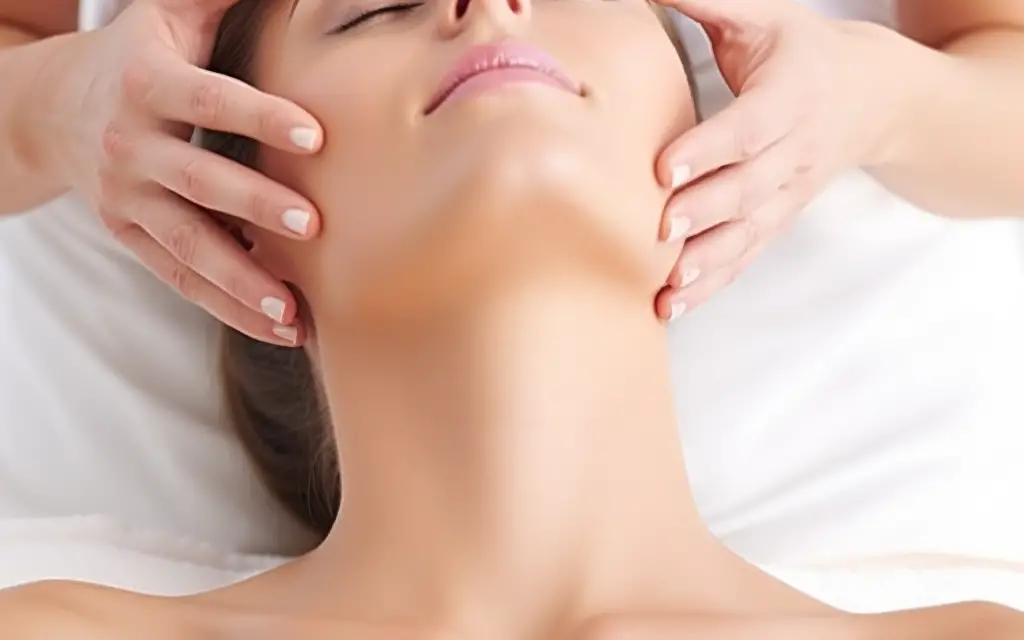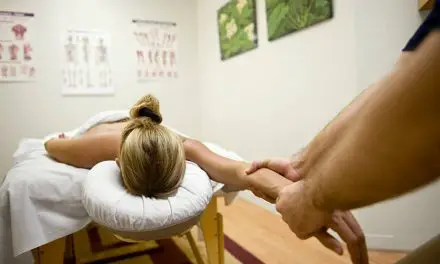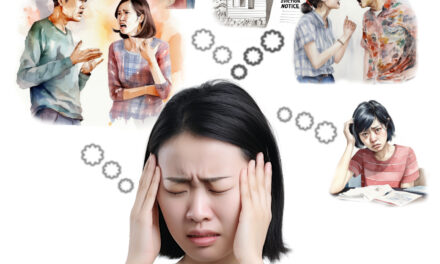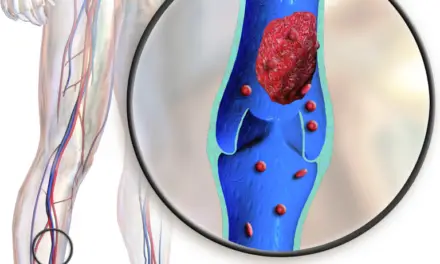Throbbing head pain, nausea, and sensitivity to light and noise make migraines exhausting to those who suffer them. Yet migraines are a common condition affecting millions of people around the world.
Not much is known about what causes migraines, but many factors, such as stress, diet, and hormones can trigger them. Fortunately, massage therapy—including self massage—can help reduce the intensity and frequency of migraines. Here’s how.
How massage may decrease migraine headaches
Because massage is a form of physical touch that affects touch receptors under your skin and brain chemistry, it has been shown to increase oxytocin (one of our brain’s happy pain-reducing chemicals) and lower blood pressure. Some of the physiological effects massage has on the body include decreasing general pain which leads to a decrease in stress on the body. Massage is also associated with a parasympathetic increase of circulation, meaning that circulation can be increased without increasing heart rate or raising blood pressure.
Keep in mind that our nervous system is divided into two parts: the sympathetic nervous system and the parasympathetic nervous system. The parasympathetic nervous system is the half that operates during rest and relaxation. It regulates functions such as digestion, respiration, and heart rate by stimulating the release of hormones and neurotransmitters.
Although its influence on the digestive organs, this branch of the autonomic nervous system also supports healthy gut function. It can also help reduce stress and tension throughout the body. All in all, it plays an essential role in maintaining overall health and balance in our bodies.
To understand why massage may work for those who suffer from migraines, it’s important to understand the possible causes. Researchers have been able to find correlating factors where migraines are concerned, including cardiac health, epilepsy, and socioeconomic conditions.
A majority of migraine sufferers are women, aged 25 to 55 years old, but migraines and headache disorders rank at number 10 in temporary disability for both men and women. One theory as to why there are more women suffering from migraines than men is because they have higher prevalence of cardiac issues than men. With such a wide range of possible causes, how can massage help?
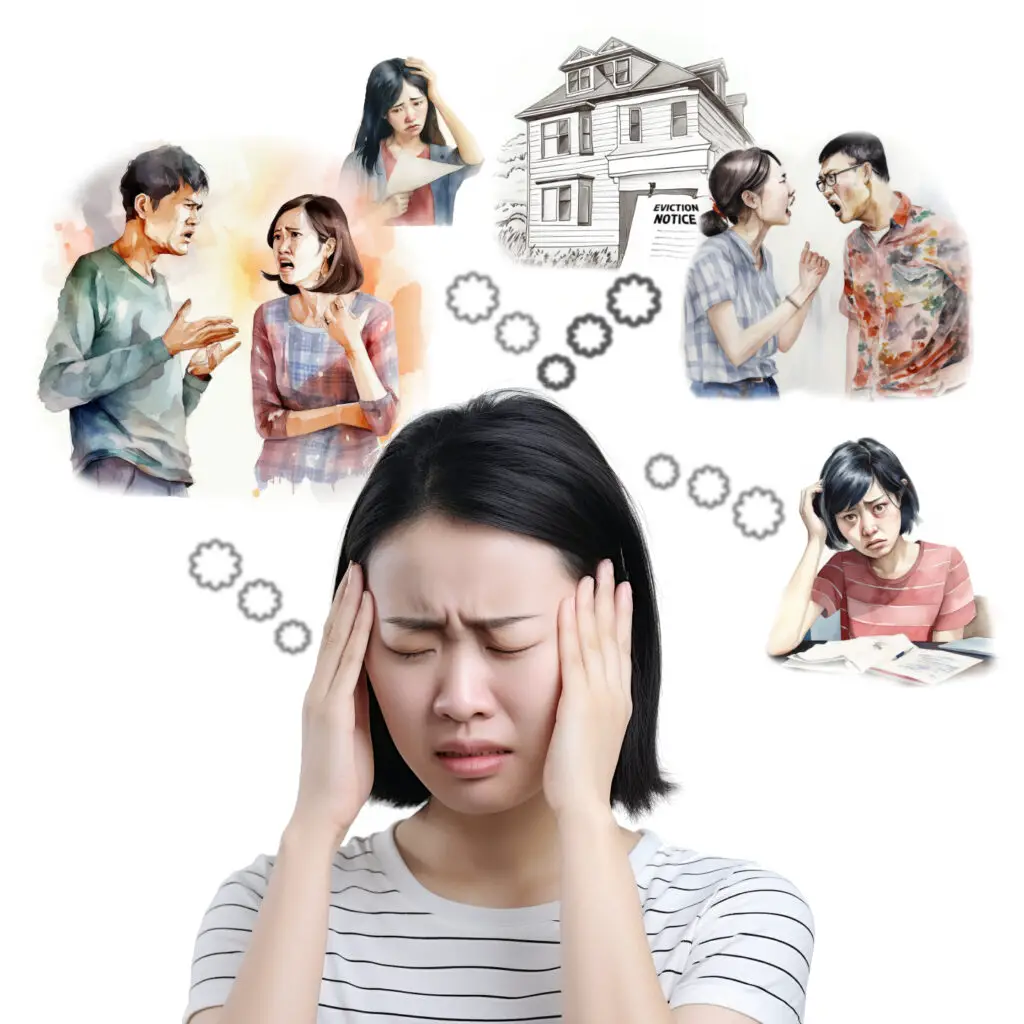
Migraines can be caused by social factors which influences psychological and biological stressors that can make your headaches worse. (Image by Nick Ng)
Does massage help with migraines?
Overall, many studies show that massage for migraines can be an effective treatment to help reduce the intensity and frequency of migraines, but studies of this type are uncommon.
Anecdotal evidence supporting relief from migraine symptoms is strong and convincing. So much so that scientists have begun conducting trials and studies involving practices like massage and acupuncture to study their physiological effects.
Recent research and studies found that migraine sufferers who underwent massage therapy not only experienced reduced headache attack frequency and symptom intensity but also showed enhanced quality of life during episodes such as decreased pain, heart rate, and blood pressure.
Aside from physical relief, massage therapy can also help reduce stress, anxiety and depression. Stress is linked to migraine triggers and affects the body’s ability to heal naturally. By reducing stress levels, massage therapy can be a great way to control chronic migraines.
Aside from physical pain relief, massage therapy can also help reduce stress, anxiety, and depression. Stress is linked to migraine triggers and affects the body’s ability to heal well. By reducing stress levels, massage therapy can be a great way to control chronic migraines.
What types of massage helps with migraines?
Some massage modalities can have positive effects on managing migraines. These include:
- Aromatherapy: Aromatherapy massages use essential oils to reduce stress and tension, as well as improve circulation.
- Swedish: a Swedish massage is a form of massage therapy that uses long strokes, kneading, deep circular movements, vibration, and tapping to help relax tense muscles.
- Deep tissue: Deep tissue massage is a type of massage therapy that focuses on the deeper layers of muscle and connective tissue.
- Trigger point therapy: Trigger point massage focuses on specific areas of the body that are causing pain or tension. This type of massage involves applying pressure to certain “trigger points” to relieve pain.
- Thai: a Thai massage is an ancient form of bodywork that combines stretching, rhythmic compression, and gentle rocking to increase flexibility, reduce pain and promote relaxation.
- Shiatsu: Shiatsu massage is a type of Japanese bodywork that involves applying pressure to specific points on the body to promote relaxation and reduce pain.
- Reflexology: Reflexology is a form of massage that focuses on the feet and hands. Therapists typically use their thumbs and fingers to compress different areas for pain and tension relief.
In general, different types of massage can help reduce migraine symptoms, but it ultimately comes down to the patient’s preference and understanding of their migraine triggers. The best approach is to discuss the options with your therapist to determine which type of massage may be most beneficial for your particular needs.
How to self massage for migraines
If you can’t afford to see a massage therapist, some self-massage techniques may help provide relief. Here is a step-by-step guide on how to perform self-massage for migraines:
- Begin with a migraine massage point by placing your thumbs on the inner corners of the eyebrows. Gently press up toward the eyebrows holding that point.
- Slowly bring your thumbs out to trace the brow ridge while maintaining gentle pressure for an eye massage.
- Once at your temples, make small circular motions with your fingertips.
- Move your fingers back to the muscle above your ears where you can continue using your fingertips or your palms for migraine head massage.
- Drag your fingers/hands toward your temples, down the sides of your jawline. Making small friction circles at the joint where the skull meets the jaw.
- Bring your index and pointer fingers to the back of the ear, using your fingers to trace down lightly past the bottom of the ears following your neck’s natural contour.
- Massage along the hairline at the base of your neck in small gliding motions, pulling your fingers down along your neck to where your neck meets your back giving yourself a neck massage.
- Finish by kneading the area where your neck meets your shoulders. This can be done in whatever way is most comfortable.
Remember to always approach self-massage with a gentle touch and only apply light pressure. With regular practice, self-massage can help reduce migraine symptoms and improve overall well-being.
Self care at home
There are several other things that readers can do to reduce migraines in addition to massage. Here are some helpful self-care tips for managing migraine pain:
- Exercise: Regular physical activity helps release endorphins which work to reduce the intensity of headaches and migraine attacks.
- Stress management: Stress is a common trigger for migraines. To reduce migraine attacks, practice stress reducing techniques, such as deep breathing, yoga, and meditation which can help relax the body and mind.
- Sleep: Sleep deprivation can be the cause of many ailments and migraines are no different. Getting the recommended amount of sleep for your age and body type is essential for managing migraine attacks.
- Diet: Eating a healthy, balanced diet is important for reducing migraine symptoms. Tyramine rich foods like count like aged cheese and processed meats should be avoided, as should alcohol and caffeine (evidence may suggest that small doses of caffeine may be beneficial, but too much has been shown to trigger migraines).
- Hydration: Staying hydrated is key to keeping your body healthy. Aim to drink about six to eight glasses of water a day to stay hydrated and reduce the risk of getting headaches from dehydration. But keep in mind that this typical recommendation isn’t supported by current research. Just drink water or other beverages without caffeine or alcohol when you feel thirsty.
Resources for migraines
Sometimes even therapy and medication aren’t enough for some people. If you’re looking for additional support, here are some organizations that may be able to help:
- Migraine Research Foundation: The MRF is an American-based nonprofit organization dedicated to advancing research for migraine and other headache disorders. They provide resources and support for those affected by migraines.
- Migraine Canada: This nonprofit provides education, resources, and support for those living with migraines in Canada.
- Migraine World Summit: The MWS is an online event that brings together experts from around the world to discuss migraine research and treatments.

Lindsay Jones, LMT
Lindsay is a licensed massage therapist and a mother of three, who specializes in rehabilitation with emphasis on prenatal and postnatal care.
After graduating from the National Holistic Institute in San Jose, Calif., she went on to study how pain affects the body and how it can be alleviated during the constant changes of pregnancy and early motherhood.
In her free time, Lindsay has a deep love of all forms of art from storytelling and music to sewing and painting.

